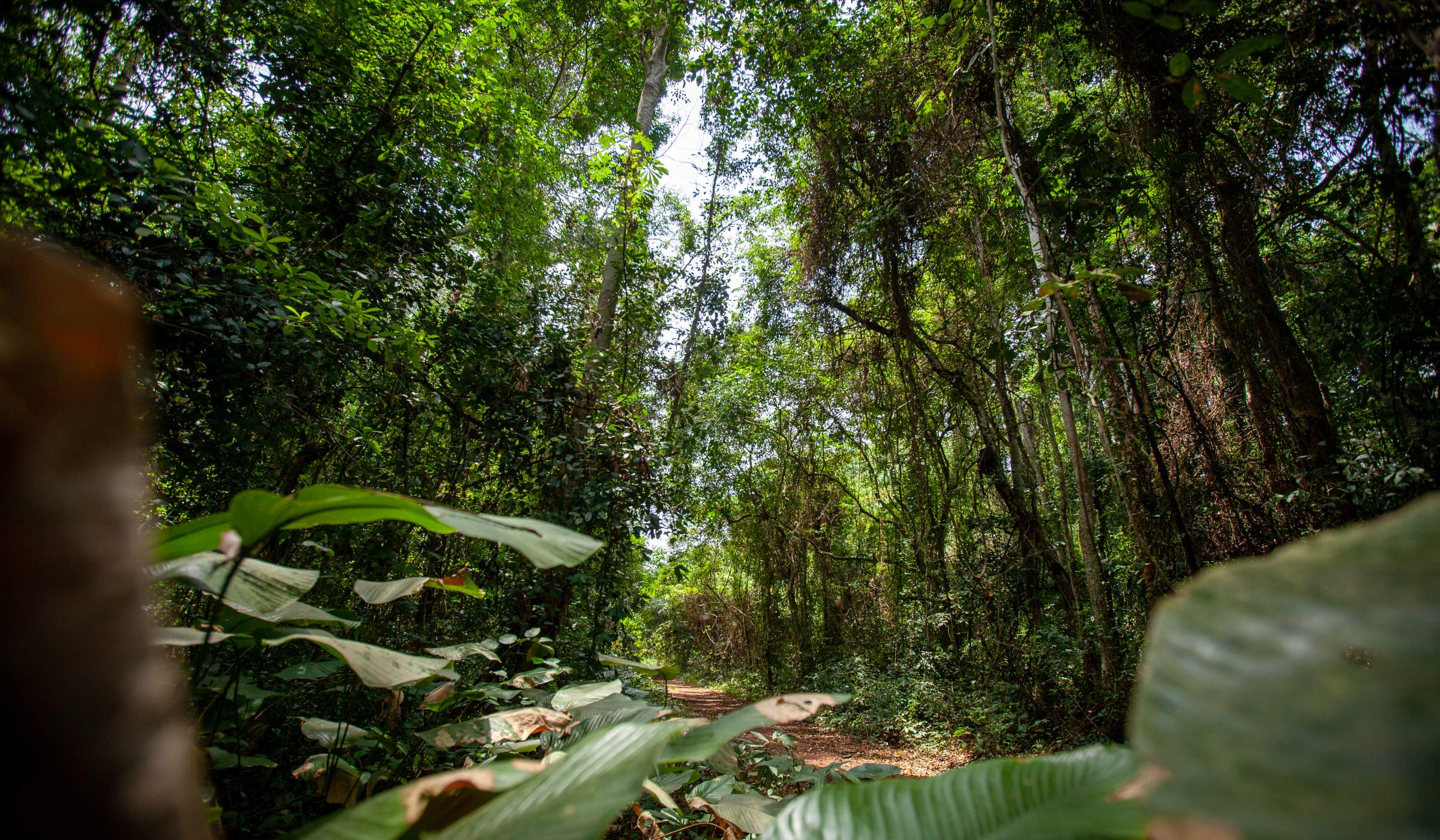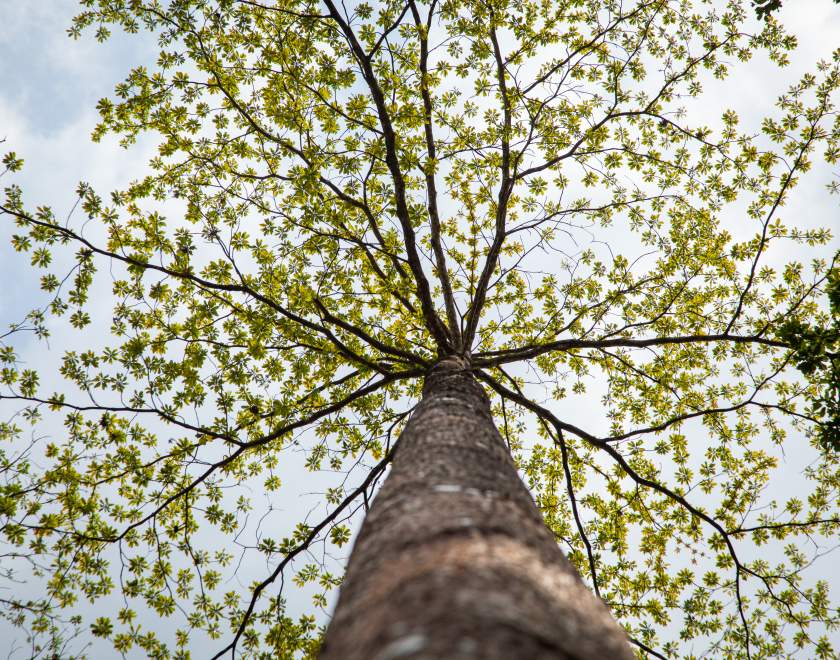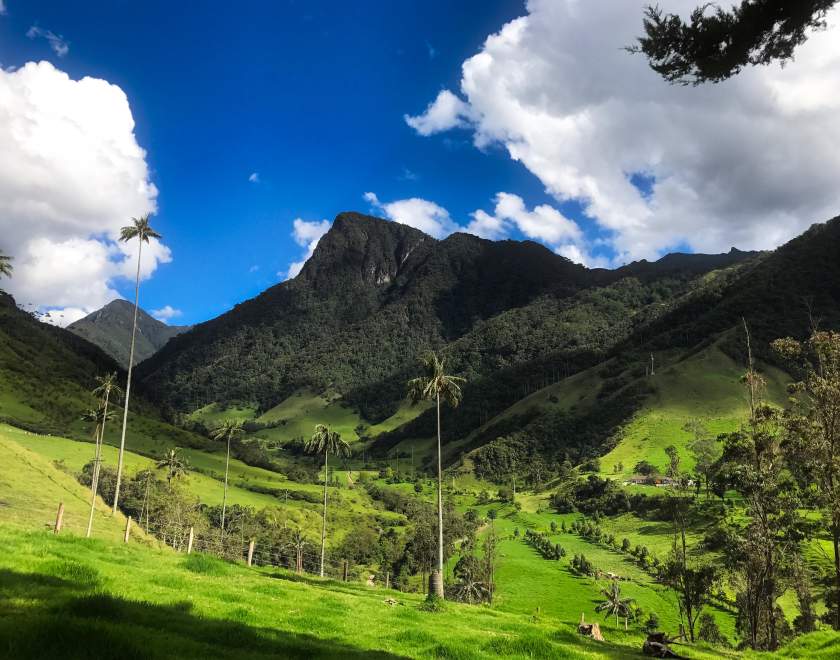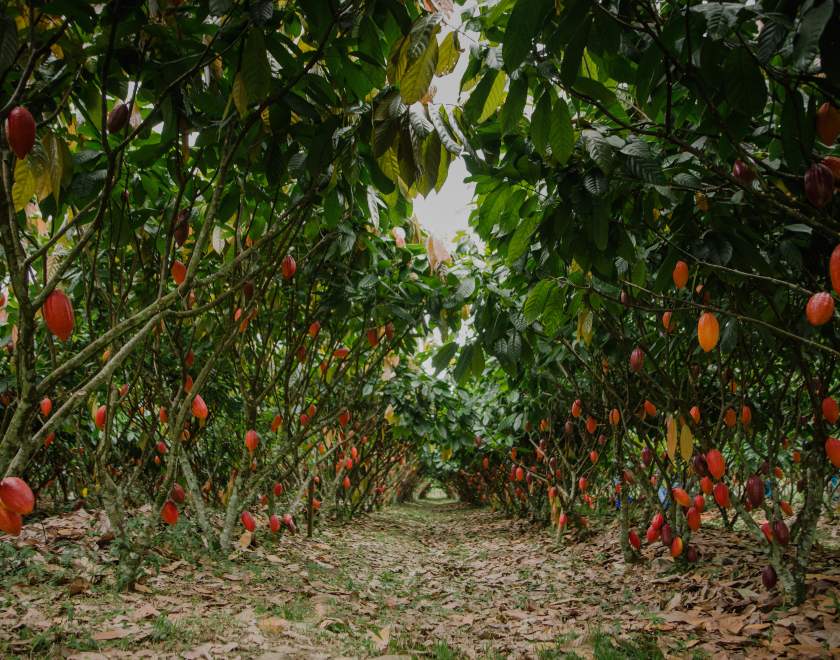
Measuring greenhouse gas emissions from cocoa is key to meeting sustainability commitments. Now, it is a regulatory requirement for companies selling cocoa in the EU.
From emissions linked to land use change (LUC) and land management (LM) to the role of carbon removal projects in reducing emissions, the cocoa industry has long needed a clear, standardised approach to accurately track its GHG emissions and mitigation efforts. Here’s what you need to know.
1. The World Cocoa Foundation (WCF) has created the first ever greenhouse gas (GHG) accounting standard for cocoa.
WCF teamed up with leading environmental sustainability consultancy Quantis to define a unified GHG accounting standard for the cocoa sector, as part of WCF’s carbon strategy. The result is the new GHG Accounting Standard Methodology, which provides a standardised approach for measuring, reporting and mitigating emissions. Companies can apply the standard across the important areas of LUC, LM and removals – spurring sector-wide standardised emissions calculations in these areas.
The new standard is designed to help companies in the cocoa sector meet their Scope 3 reporting obligations. It empowers cocoa companies to consistently report to the Science Based Targets Initiative (SBTi) and supports reporting in accordance with the GHG Protocol (GHGP) Land Sector and Removals Guidance draft (with the final to be released later this year), as well as future mandatory legislation. It is broad and flexible, covering a range of sectors. Based on input from numerous WCF members, the new standard leverages the GHG Protocol to provide specific guidance for cocoa.
“We reviewed more than 100 approaches used by WCF member companies, and with the companies who will be using this standard, made tough choices to agree on a unified approach,” says Michael Matarasso, WCF’s Impact Director and Head of North America. “It will create alignment and comparability across the cocoa sector – and strengthen credibility for everyone using it.”
2. The manual will be a key tool for companies as they calculate cocoa-related emissions.
The manual includes minimum requirements aligned with the GHG Protocol, as well as best practice recommendations for those looking to go further. It also includes checklists for practical implementation.
Companies will be able to credibly the carbon sequestered through removal projects and activities, addressing key questions and establishing what should be counted in these areas. This standardisation could open the door to greater use of removal projects for companies to claim emissions reductions, while also enabling greater benefit sharing with cocoa farming communities from carbon market mechanisms like the Forest Carbon Partnership Facility.
3. There is great potential in using agroforestry to remove carbon…
When it comes to carbon removals, many organisations are interested in agroforestry as a solution. But how effective is agroforestry at sequestering carbon, how does it affect cocoa production and how can we measure agroforestry and associated removals accurately and efficiently?
Wilma Blaser-Hart is a researcher who has studied these questions extensively. Currently based at the University of Queensland in Australia, she undertook research on agroforestry systems in Côte d’Ivoire and Ghana.
In collaboration with Jan Dirk Wegner from the EcoVision Lab at University of Zurich and with funding from the Lindt Cocoa Foundation, the Swiss National Science Foundation (SNSF) (through an European Biodiversa grant) and the Joint Cocoa Research Fund of CAOBISCO and ECA, her team developed machine learning models capable of quantifying shade tree cover and aboveground biomass in cocoa farms. While there is some uncertainty in these estimates, and more so for biomass than cover, these are the first industry-wide estimates for cocoa systems in this region.
According to Blaser-Hart’s research, if cocoa-producing areas in these countries raised shade tree cover to 30%, these farms could sequester as much as 10.9 million tons of CO2e annually over the next few decades as the trees mature. That’s equivalent to nearly 10% of the countries’ total annual emissions. And it’s about 170% of the present-day annual emissions associated with cocoa production in current areas of those countries. However, when considering the contribution of land-use change, particularly deforestation, to the industry’s annual emissions, this figure shrinks to approximately 16% of annual cocoa-associated emissions.
Blaser-Hart’s previous research has shown that shade trees used in agroforestry systems do not have significant negative impact on cocoa yields until shade-tree cover is 30-40%. However, the average cover across Ghana and Côte d’Ivoire is only 13%. Moreover, more than 80% of cocoa production in Ghana and Côte d’Ivoire takes place on farms with less than 20% tree cover so there’s lots of space to add more agroforestry trees.
“It shows just how big the potential of agroforestry could be for carbon removals, in addition to other benefits like biodiversity,” Blaser-Hart said.
4. …but there are measurement challenges and one big caveat.
Although the potential for agroforestry in carbon removals is great at the regional and country level, measuring it at the farm level is still very difficult, Blaser-Hart said.
Using free publicly available Sentinel-2 remote sensing data at 10-meter grid spacing is not yet precise enough to measure individual farms at scale, measurements using airborne lidar are expensive to use at scale and measuring carbon removals on the ground is notoriously difficult, time consuming, expensive and can be imprecise. So better methods, stronger technology but especially a concerted effort for collecting more accurate reference data that are collected and validated using good scientific standards (and made accessible to those working on the technical implementation) are needed to help quantify removals for individual farms at scale.
Blaser-Hart noted that the potential for carbon removal across all cocoa production is roughly equivalent to the carbon stocks currently contained in the remaining forests of Ghana and Côte d’Ivoire. In other words, planting trees on cocoa farms is commendable, but there is no substitute for conserving existing forests from the outset.
“This re-emphasises how important it is to stop cutting down forests and keep the main focus on protecting them,” she said.
5. All these topics will be discussed at WCF’s upcoming Partnership Meeting in Brazil.
When cocoa and chocolate stakeholders from around the world gather in São Paulo this March, more than one session in the extensive programme will tackle this subject.
One session will examine the complexities of forest monitoring and GHG accounting, as well as how the cocoa industry can enhance data standards for climate and environmental management. Another will look at how companies can map their way out of the maze of carbon claims. And yet another will explore the business case for agroforestry and biodiversity.
If you’re not already signed up for the event, take another look at the agenda and list of speakers!



